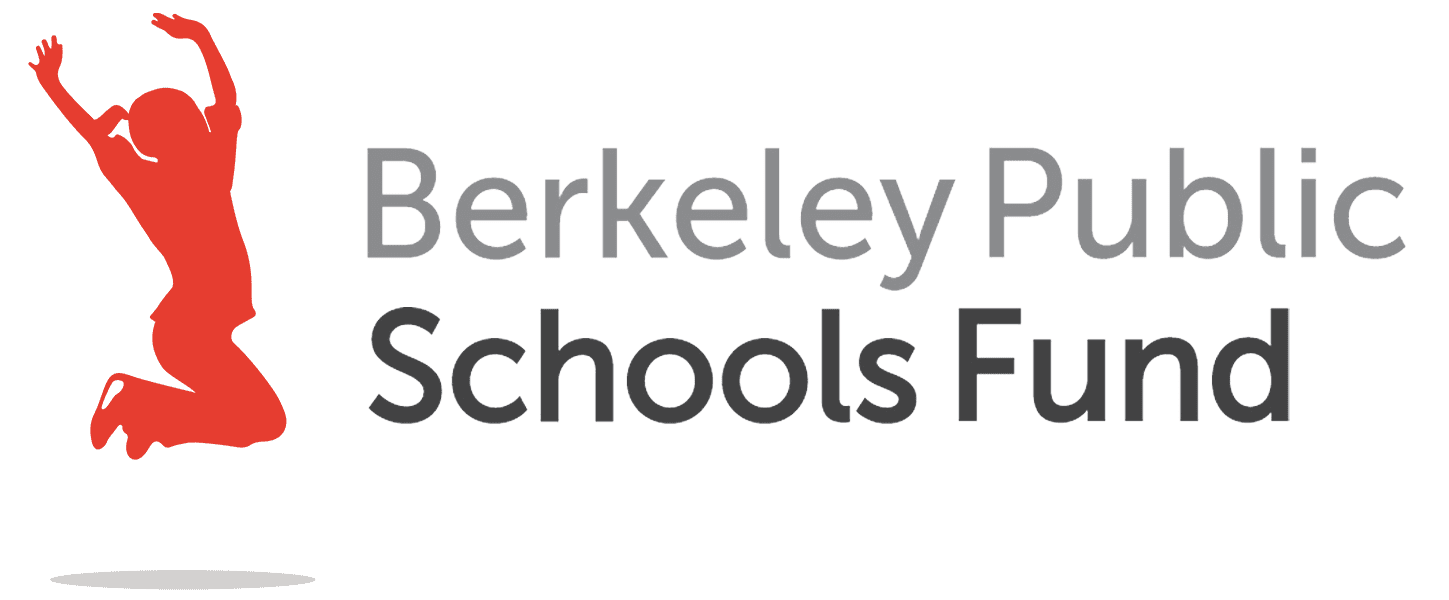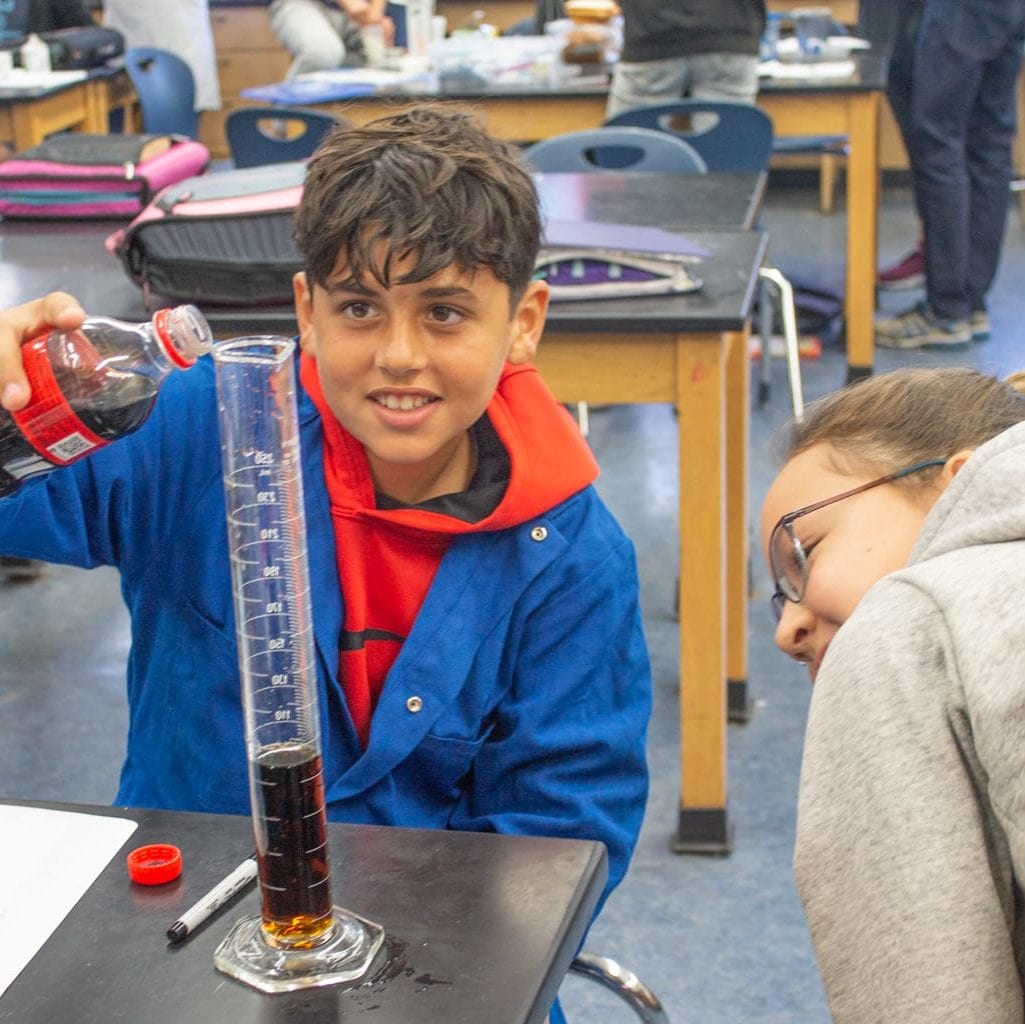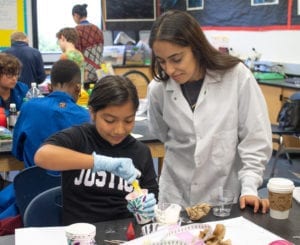 Berkeley Public Schools Fund is proud to support Be a Scientist for the 5th consecutive year with a Strategic Impact Grant. Be a Scientist is a program run by Community Resources for Science (CRS) that brings UC Berkeley undergraduate and graduate student mentors each year to all of the District’s 7th grade classrooms to work with small groups of students to conduct their own individually designed experiments. During the 6- week long program, the mentors assist students in designing an experiment that explores a topic and question of their choice, conducting the experiment in multiple trials, and analyzing and presenting the data.
Berkeley Public Schools Fund is proud to support Be a Scientist for the 5th consecutive year with a Strategic Impact Grant. Be a Scientist is a program run by Community Resources for Science (CRS) that brings UC Berkeley undergraduate and graduate student mentors each year to all of the District’s 7th grade classrooms to work with small groups of students to conduct their own individually designed experiments. During the 6- week long program, the mentors assist students in designing an experiment that explores a topic and question of their choice, conducting the experiment in multiple trials, and analyzing and presenting the data.
 We visited King Middle School on the day 7th graders were conducting their experiments. This was the third meeting between the mentors and the students, with the mentors already having introduced themselves and given demos of possible experiments, and the students having designed their experiment of choice and identified the materials they would need. The mentors entered the classroom bearing a box of gifts, which consisted of various lab materials that ranged from household products like vinegar and shaving cream, to items that elicited excitement like dry ice and a custom-built wooden rack holding a bicycle wheel that could spin freely.
We visited King Middle School on the day 7th graders were conducting their experiments. This was the third meeting between the mentors and the students, with the mentors already having introduced themselves and given demos of possible experiments, and the students having designed their experiment of choice and identified the materials they would need. The mentors entered the classroom bearing a box of gifts, which consisted of various lab materials that ranged from household products like vinegar and shaving cream, to items that elicited excitement like dry ice and a custom-built wooden rack holding a bicycle wheel that could spin freely.
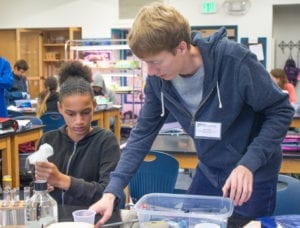 The mentors and students convened in small groups, formulating a game plan for how the experiment would go, anticipating possible setbacks and solutions. Once the mentors and students had a good understanding of the process and safety procedures in place (no handling of dangerous materials without safety equipment and a mentor observing), the students were up and running. The classroom was soon filled with the sounds of clinking beakers, test tubes, and exclamations of, “This is so official!”
The mentors and students convened in small groups, formulating a game plan for how the experiment would go, anticipating possible setbacks and solutions. Once the mentors and students had a good understanding of the process and safety procedures in place (no handling of dangerous materials without safety equipment and a mentor observing), the students were up and running. The classroom was soon filled with the sounds of clinking beakers, test tubes, and exclamations of, “This is so official!”

The range of students’ studies was astounding. One group made slime from different proportions of the same ingredients in order to create different levels of “fluffiness.” Another group heated the air inside a helium balloon and measured the time it takes for it to travel from the floor to the ceiling. Another group was adding dry ice to solutions of varying amounts of water and lemon juice in test tubes and then immediately sealing it with a balloon to measure how much gas was emitted by measuring its volume. There was a group outside gleefully throwing frozen watermelons, tomatoes, and oranges from an outdoor stairwell to compare its “splatter diameter” compared to that of room temperature fruits.
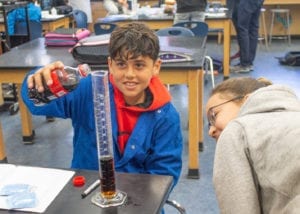 Almost all students indicated that they enjoyed the opportunity to select their own topic to investigate, having Cal mentors provide support, and access to materials they don’t normally get to use in science class. Some common student feedback was:
Almost all students indicated that they enjoyed the opportunity to select their own topic to investigate, having Cal mentors provide support, and access to materials they don’t normally get to use in science class. Some common student feedback was:
“I really liked the fact that we could choose what we wanted to do our experiment about, as opposed to being assigned an experiment that we had to do that maybe we weren’t super interested in. I also liked getting to know my mentor!”
“I enjoyed seeing all the different kinds of experiments and results, and that we we’re not all doing the same thing.”
“I liked seeing the results of my experiment. It was like Christmas!
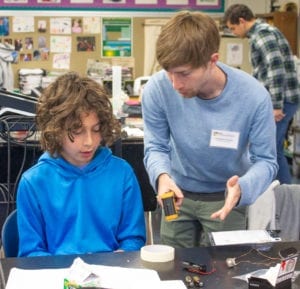 Mentors rated their overall experience positively as well, with one mentor stating, “Seeing the students’ enthusiasm reminded me why science is fun! It’s easy to forget the impact of science on the “real world” when you’re in a lab, but bringing it to the classroom and answering the students’ surprisingly thoughtful questions was refreshing and challenging.”
Mentors rated their overall experience positively as well, with one mentor stating, “Seeing the students’ enthusiasm reminded me why science is fun! It’s easy to forget the impact of science on the “real world” when you’re in a lab, but bringing it to the classroom and answering the students’ surprisingly thoughtful questions was refreshing and challenging.”
The 7th grade teachers are unanimous in supporting this experience for their students. As one teacher put it, “Be a Scientist framed the entire year for my seventh graders, and was both a serious and enjoyable exploration of science. It also allowed them to see scientists as “real” people just like them, and that a science career is something they can not only aspire to but begin right now.”
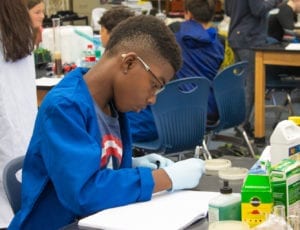
Be A Scientist allows adolescent students to have choice and individual mentorship, two important values at that age. The ripple effect goes beyond the students as the mentors and teachers also benefit from helping students achieve a personal, inquiry-based scientific investigation. The curiosity and creativity students exhibit is contagious, reminding everyone involved what being a scientist is really about.
